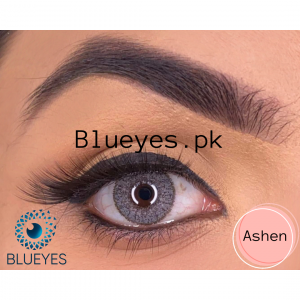Inflexible lenses
Glass lenses were never adequately agreeable to acquire far-reaching fame. The primary lenses to do so were those produced using polymethyl methacrylate (PMMA or Perspex/Plexiglas), presently normally alluded to as “hard” lenses. Their fundamental impediment is they don’t permit oxygen to go through to the cornea, which can cause various unfriendly, and frequently serious, clinical occasions. Beginning in the last part of the 1970s, further developed unbending materials which were oxygen-porous were created. brown contacts lenses produced using these materials are called inflexible gas penetrable lenses or ‘RGPs’. An inflexible point of convergence can cover the normal condition of the cornea with a new refracting surface. This infers that a round inflexible contact point of convergence can address corneal astigmatism. Unbending lenses can likewise be made as front-toric, back-toric, or boric. Unbending lenses can likewise address corneas with sporadic calculations, like those with keratoconus or post-careful ectasias. Much of the time, patients with keratoconus see preferred from inflexible perspectives through glasses.
Delicate lenses
Delicate lenses are more adaptable than unbending lenses and can be tenderly rolled or collapsed without harming the focal point. While inflexible lenses require a time of variation before solace is accomplished, new delicate focal point wearers commonly report focal point mindfulness as opposed to agony or inconvenience. Hydrogel lenses depend on their water content to send oxygen from the perspective to the cornea. Thus, higher water content lenses permitted more oxygen to the cornea. In 1998, silicone hydrogel, or Si-hy lenses opened up. These materials have both the very high oxygen porousness of silicone and the solace and clinical execution of traditional hydrogels. Since silicone permits more oxygen penetrability than water, the oxygen porousness of silicone hydrogels isn’t attached to the focal point’s water content.

Lenses have now been created with such a lot of oxygen porousness that they are supported for the time being wear (expanded wear). Lenses supported for day-to-day wear are likewise accessible in silicone hydrogel materials. Disservices of silicone hydrogels are that they are marginally stiffer and the focal point surface can be hydrophobic, hence less “wettable” – factors that can impact the solace of focal point use. New assembling procedures and changes to multipurpose arrangements make limit these impacts. Those new procedures are in many cases separated into 3 ages:
- The first era (plasma covering): A surface change process called plasma covering modifies the focal point surface’s hydrophobic nature;
- Second era (wetting specialists): Another procedure consolidates interior rewetting specialists to make the focal point surface hydrophilic;
- Third era (intrinsically wettable): A third cycle utilizes longer spine polymer chains that outcome in less cross-connecting and expanded wetting without surface modifications or added substance specialists.
Producing Specification
- Jewel turning – The focal point begins as a tube-shaped plate held in the jaws of the machine that is outfitted with a modern-grade precious stone as the cutting device. The CNC machine could turn at very nearly 6000 RPM as the shaper wipes out the best proportion of material from inside the point of convergence. The indented (internal) surface of the point of convergence is then cleaned with some fine grinding paste, oil, and a little polyester cotton ball turned at high speeds. To hold the delicate point of convergence in an opposite manner, wax is used as concrete. The focal point’s raised (external) surface is in this way cut and cleaned by a similar cycle. This strategy can be utilized to shape unbending as well as delicate lenses. On account of softs, the focal point is cut from a got dried polymer that is unbending until water is once again introduced.
- Formed – Molding is utilized to produce a few brands of delicate contact lenses. Pivoting molds are utilized and the liquid material is added and formed by centripetal powers. Infusion trim and PC control are additionally used to make almost amazing lenses. The focal point is kept wet all through the whole trim cycle and is rarely dried and rehydrated.
